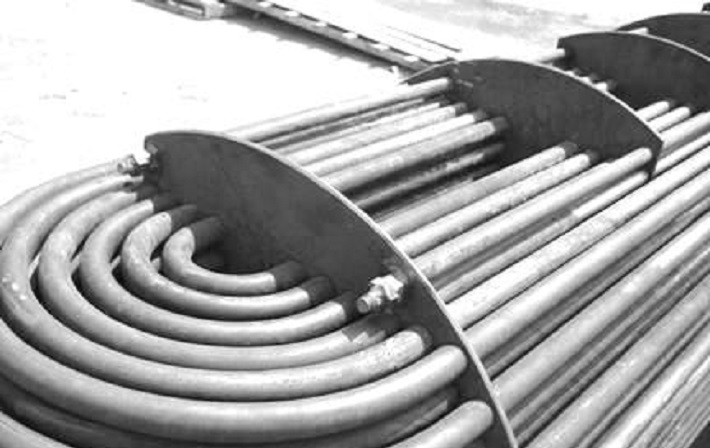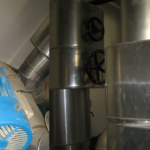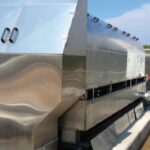Below are details which are helpful for preparing the tender and contract requirements for maintenance of heat exchangers also known as annual rate contract.
Generally sealed tenders are invited from registered contractors with the client organization, who have already prequalified for the maintenance of heat exchangers.
The scope of work includes maintenance of various heat exchangers on annual rate contract basis.
Period of contract of the work will be 12 months extendable for 18 months from the date of issue of work order issue of instruction of start the work or to a specific deadline. Therefore the rate quoted by the maintenance company shall be valid for the specific period as per contract.
The heath exchangers will be released for cleaning as per the requirement/ shutdown; contractor shall be ready to do the work at any point of time during the period of contract.
Minimum number of exchangers released for cleaning can be one at a time and the maintenance company has to mobilize the crew within 24 hours of the notice from the time of intimation / instruction of start of work.
General Requirements for Heath Exchanger Maintenance
Once the equipment is ready for maintenance, isolation of equipment by putting blinds/spectacle blinds in feed and outlet nozzles and all other nozzles indicated for the purpose and fix blind number tags.
Provide necessary hose connections for draining, purging, steaming and water washing and airing of the equipment as the case may be as per the instruction of Engineer in Charge.
Record the blind tag Nos. in the blind register and obtain signature in the register by Engineer in Charge.
Removal and refixing (including to and fro transportation to central workshop / equipment) of Pressure safety valves (if required) on the equipment and connected pipe lines shall be in the scope of work of the respective equipment in the schedule of rates unless otherwise mentioned separately.
Maintenance of the exchanger shall be done as explained in following section.
Maintenance party shall be assisting the inspecting team from client engaged in the inspection of Heat Exchanger.
CRANE / DERRICK required for the successful completion of the entire work shall be arranged by the contractor at his own cost.
Client shall permit the contractor to hire the clients’ mobile crane on chargeable basis if it is available and the rate shall be agreed for mobile crane of suitable capacity.
Scaffolding material (pipe and clamps) and its erection if required should be arranged by the contractor.
Heat Exchanger Maintenance
Floating Head Exchanger
Once the equipment is ready for maintenance, isolation of equipment by putting blinds/spectacle blinds in feed and out let nozzles and all other nozzles indicated for the purpose and fix blind number tags.
Open and remove channel head cover
Open and remove channel head
Open and remove shell cover and floating head cover.
Pull out the tube bundle as per the instruction of Engineer in Charge.
Clean the tubes and shell, channel head cover, channel head shell, floating head, floating head cover and dish end cover using hydro blasting machine (Karcher Pump) and all flange serration by scrappers / wire brushes.
If hydro blasting is required for cleaning, the same will be arranged by client at their cost.
Arrange necessary preparation for man entry if required i.e. provide necessary hose connections for draining, and water washing of the equipment as the case may be.
Blinding shell side and tube side in the required sequence and stages suitable for hydrotest of tube side and shell side separately.
Assemble the tube bundle, channel head shell, channel head cover, floating head, floating head cover and dish end cover in required sequence and stages suitable for Hydrotest of tube side and shell side separately.
Hydrotest the exchanger on shell side and tube side and floating head gasket, dish end cover gasket.
Leaking tubes if any noticed during hydrotest should be plugged using CS/SS/Brass plugs as per the instruction of Engineer in charge. Required plugs will be supplied by client at free of cost. Repeat the hydrotest if any leak at shell side / tube side.
You shall get the hydrotest witnessed by Engineer in charge / 3rd party Inspector.
Test rigs should be used for testing floating head type exchangers tube bundle. (Test rigs are generally available in main store yard / maintenance workshop, the same has to be identified, cleaned, transported to the heat exchanger. After testing, the test rigs are to be transported back to the original location).
Test pressure for hydrotesting should be as per the inspection of the Inspector/Engineer in charge.
Remove the isolations (i.e. blind, spectacle blinds, blind tags etc.) for normalizing the Heat Exchanger.
Hot bolting of the flanges after putting the equipment in line if it is required. However, this activity will not be counted for the completion time for the work.
In case of cleaning of heater tubes by hydro blasting (by client through other agencies), there will be a gap of 1 or 2days (for cleaning) in between opening / boxing up of exchanger. However, this activity will not be counted for the completion of the work.
Note: 50% of the quoted rate only will be paid to the party if the tube bundle is not pulled out and brought to the ground (i.e. only hydro testing of the tube and shell side and plugging of the leaking tube is done.)
Maintenance of ‘U’ Tube Heat Exchanger
Once the equipment is ready for maintenance, isolation of equipment by putting blinds/spectacle blinds in feed and out let nozzles and all other nozzles indicated for the purpose and fix blind number tags.
Open and remove channel head cover.
Open and remove channel head.
Open and remove shell cover if available.
Pull out the heat exchanger tube bundle as per the instruction of Engineer in Charge.
Clean the tubes, channel head cover, channel head shell and end cover using hydro cleaning machine (Karcher Pump) and all flange serration by scrappers / wire brushes.
If Hydro blasting is required for cleaning, the same will be arranged by client at their cost.
Blinding shell side and tube side in the required sequence and stages suitable for hydrotest of tube side and shell side separately.
Assemble to tube bundle, channel head, channel head cover, shell cover (if available) etc., in the required sequence and stage.
Leaking tubes if any noticed during hydrotest should be plugged using CS/SS/Brass plugs as per the instruction of Engineer in charge. Required plugs will be supplied by client at free of cost.
Repeat the hydrotest if any leak at shell side / tube side.
Get the hydrotest witnessed by Engineer in charge / 3rd party Inspector.
Test pressure for hydro test should be as per the inspection of the Inspector/Engineer in charge.
Remove all the isolations (i.e. blind, spectacle blinds, blind tags etc.) for normalizing the Heat Exchanger.)
Hot bolting of the flanges after putting the equipment in line if it is required. However, this activity will not be counted for the completion time for the maintenance works.
In case of cleaning of heat exchanger tubes by hydro blasting (through other agencies), there will be a gap of 1 or 2 days (for cleaning) in between opening / boxing up of exchangers. However, this activity will not be counted for the completion of the work.
Note: 50% of the quoted rate only will be paid to the party if the tube bundle is not pulled out and brought to the ground (i.e. only hydro testing of the tube and shell side and plugging of the leaking tube is done.)
Taxes & Duties
Quoted rate shall be inclusive of all taxes and duties whatever applicable to this job except service tax. Service tax will be paid extra if the party produces service tax registration and other relevant documents to client.
Liquidated Damages
In case the contractor fails to complete the work within the stipulated period, contractor shall be liable to pay a LD of ½% (half percent) of the contract value per day for the delay or part thereof subject to a maximum of 5% (Five percent)of the contract value.
Defect Liability Period
Contractor shall guarantee the work for a period of one year from the date of issue of completion certificate.
Any damage or defect that may arise or lie undiscovered at the time of issue of completion certificate, connected in any way with the workmanship should be rectified by the contractor at his own expense as deemed necessary by the Engineer in Charge.
Client Scope of Supply
Client shall issue hoses, gaskets, fasteners, pressure gauges, tube plugs, air, water, electricity at one point free of cost to the contractor.
Provide only the gasket sheets (CAF) (free of cost) to the contractor. The maintenance contractor has to make arrangements to cut the gaskets to the required size.
Fasteners (if required) for the final box up work shall be issued by client at free of cost.
Contractor’s Scope
All skilled & Unskilled manpower required for the work is to be arranged by the contractor. All machines, tools, tackles, lifting equipment’s such as crane, chain pulleys, slings, D shackles, Hydraulic test pumps and other tools and equipment’s required for the completion of the work is to be arranged by the contractor.
Crane / derrick required for the successful completion of the entire heat exchanger maintenance work shall be arranged by the contractor at his own cost.
Client shall permit the contractor to hire their mobile crane if available on chargeable basis if it is available and the rate shall be agreed for mobile crane of suitable capacity.
Scaffolding material (pipe and clamps) and its erection if required should be arranged by the maintenance contractor.


